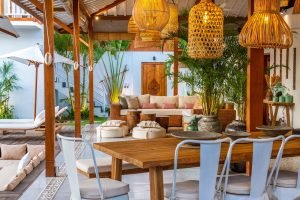Last Updated on October 21, 2025 by teamobn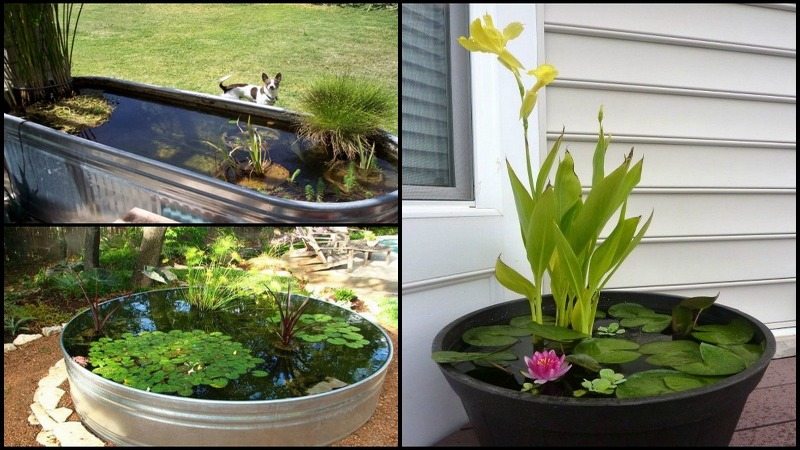
Having a pond or aquarium in your backyard doesn’t have to be an expensive project. Glass aquariums are pricey, require constant maintenance, and are not always attractive, especially outdoors.
Well, there are other backyard pond ideas that are just as visually attractive if not more at a fraction of the price of the conventional aquariums. You can even DIY one by using upcycled or cheap materials in your workshop.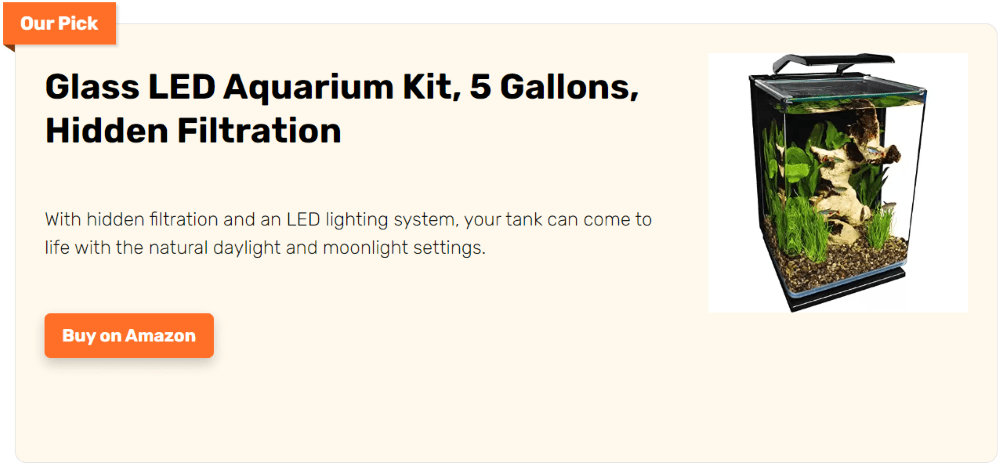
Fish ponds offer numerous advantages, making them a popular feature in many backyard landscapes. Here are some of the key benefits:
1. Recreational and Aesthetic Value: A well-designed fish pond enhances the aesthetic appeal of your property, providing a tranquil focal point for relaxation and enjoyment. Watching fish swim and observing the natural ecosystem can be both peaceful and visually pleasing.
2. Environmental Advantages: Fish ponds can serve as mini-ecosystems, supporting biodiversity by providing habitat for fish, insects, amphibians, and other aquatic organisms. They can also help improve local water quality by acting as natural filters, removing pollutants and excess nutrients from the water.
3. Educational Opportunities: Maintaining a fish pond offers valuable educational experiences for both children and adults. It provides insights into aquatic ecosystems, fish behaviour, water chemistry, and environmental stewardship. Observing the interactions between fish and other pond inhabitants can foster a greater appreciation for nature and conservation.
4. Sustainable Food Source: Depending on the size and purpose of the pond, it may be possible to cultivate fish for consumption. Fish such as tilapia, carp, and trout are commonly raised in backyard ponds for food. This can provide a sustainable source of protein and contribute to food self-sufficiency.
5. Water Conservation: Fish ponds can help conserve water by reducing the need for traditional lawn irrigation. Instead of watering grassy areas, you can allocate water to the pond, where it supports aquatic life and contributes to the overall ecosystem.
7. Mosquito Control: When properly designed and maintained, fish ponds can help control mosquito populations by providing a natural habitat for mosquito-eating fish species such as goldfish, guppies, and mosquito fish (Gambusia). These fish feed on mosquito larvae, helping to keep their numbers in check and reducing the risk of mosquito-borne diseases.
8. Therapeutic: Spending time near a fish pond can have therapeutic effects, promoting relaxation, reducing stress levels, and improving mental well-being. The gentle sound of flowing water, combined with the mesmerizing movements of fish, brings a calming atmosphere that soothes the mind and body. What’s more, you can even get ESA animal registration for your fish.
9. Property Value: A well-maintained fish pond can increase the resale value of your property and make it more attractive to potential buyers. Aesthetically pleasing landscaping features like ponds are often viewed as desirable amenities that enhance the overall appeal of a home.
Design and Build Your Fish Pond or Aquarium
Below are some inspiring DIY projects to help you design and build your fish pond. Whether your backyard is big or small, you can always add aquatic life to it.
You can incorporate unconventional vessels such as old troughs, a big glass jar, or a stock tank, or you can make a small pond among other ideas. Or you can do novelty combinations like a planter and a fish pond in one.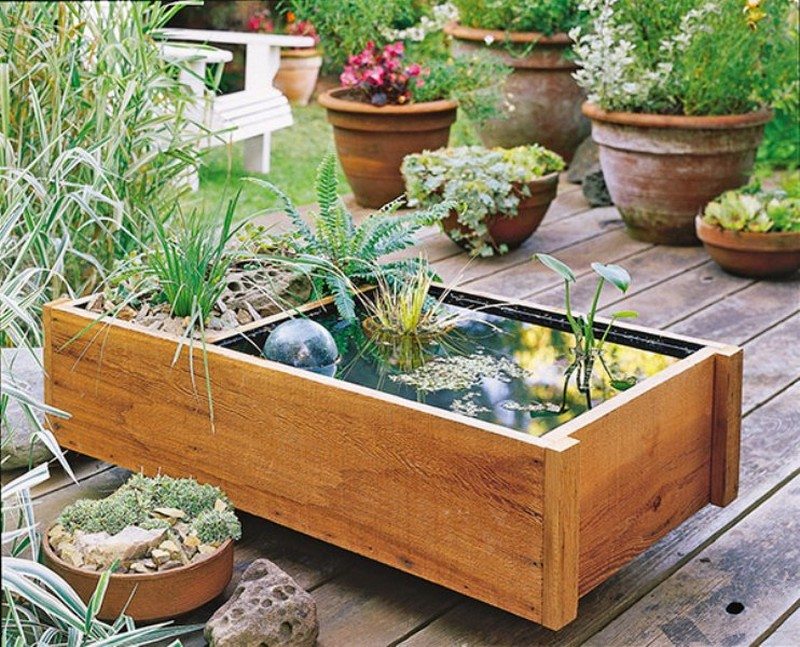
Most of them are inexpensive and serve as great containers for your pet fish to live in. Others might be a bit costly, but all of them are easy-to-do projects.
They can certainly add some charm to your outdoor living space. They make great conversation pieces too!
Do you have a place for a pond or aquarium in your yard? Go to our gallery for some inspiration for your pond.
Click on any image to start the lightbox display of our backyard pond ideas. Use your Esc key to close the lightbox. You can also view the images as a slideshow if you prefer ![]()
Trough Fish Pond
A trough fish pond is an artificial ecosystem. This is one of the backyard pond ideas designed to help fish and other aquatic animals grow and reproduce. It is usually made from an unused stainless animal feeder. A trough fish pond’s water circulation system is usually placed in the bottom part of the pond.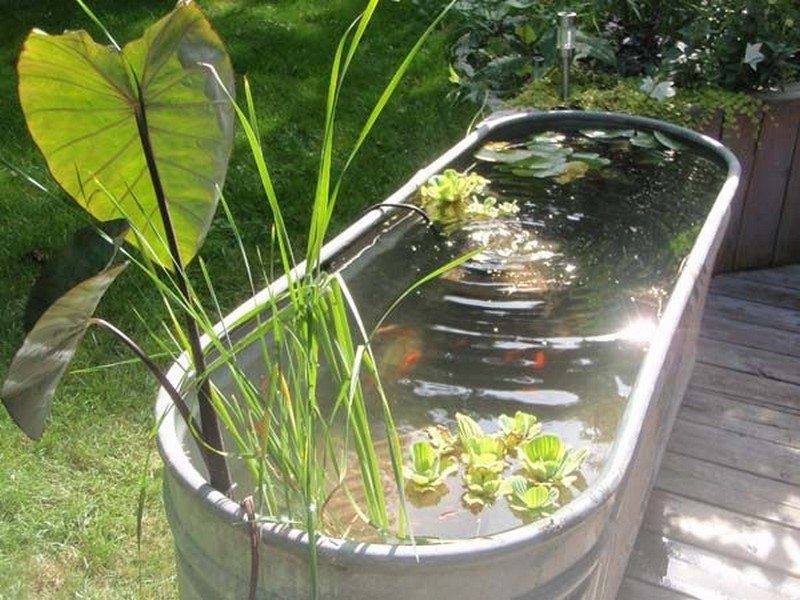
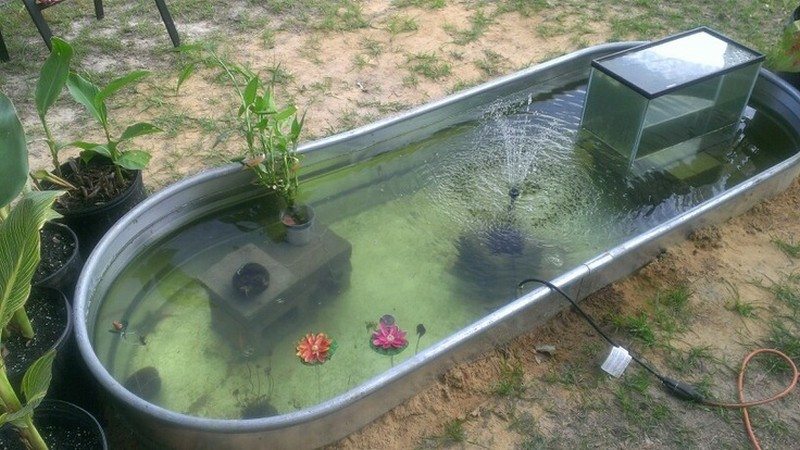
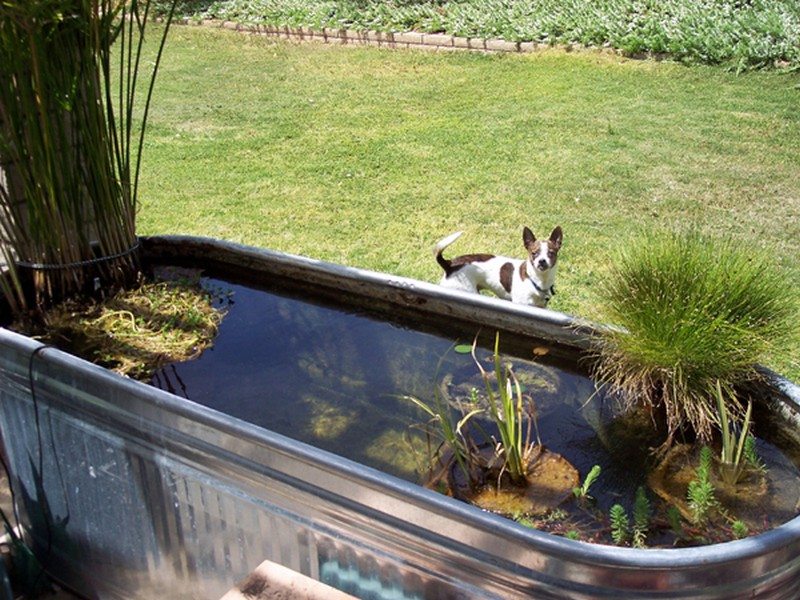
Big Jar Aquarium
The experts of Mother Nature have placed these organisms in an intricate ecosystem that carefully balances the needs and behaviours of both plants and animals. This aquarium is large enough to hold a goldfish and a little shrimp.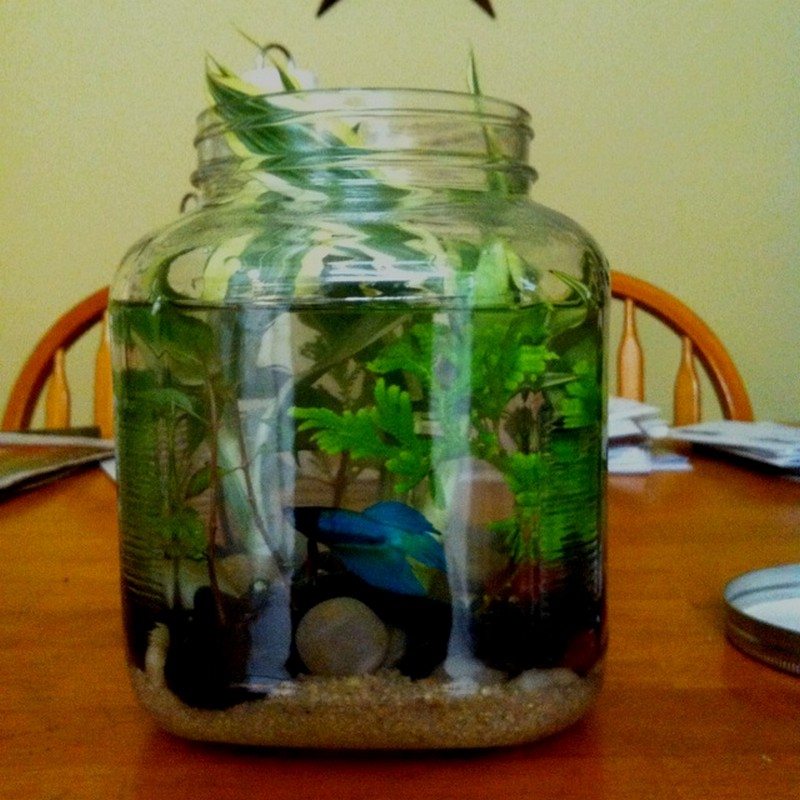
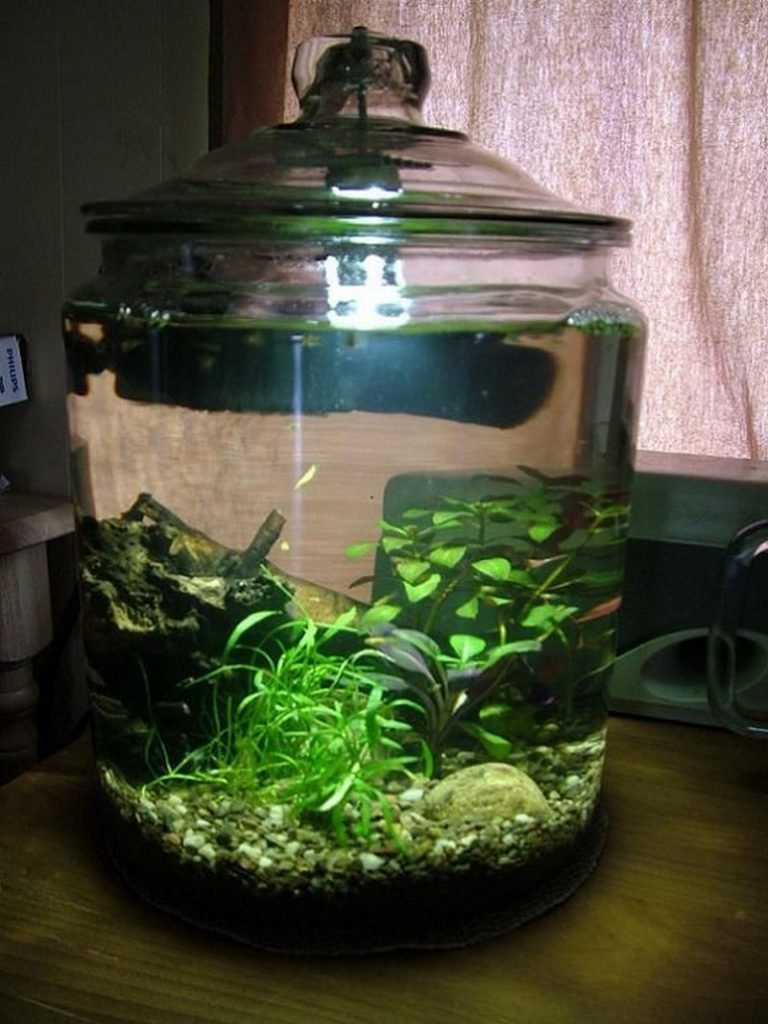
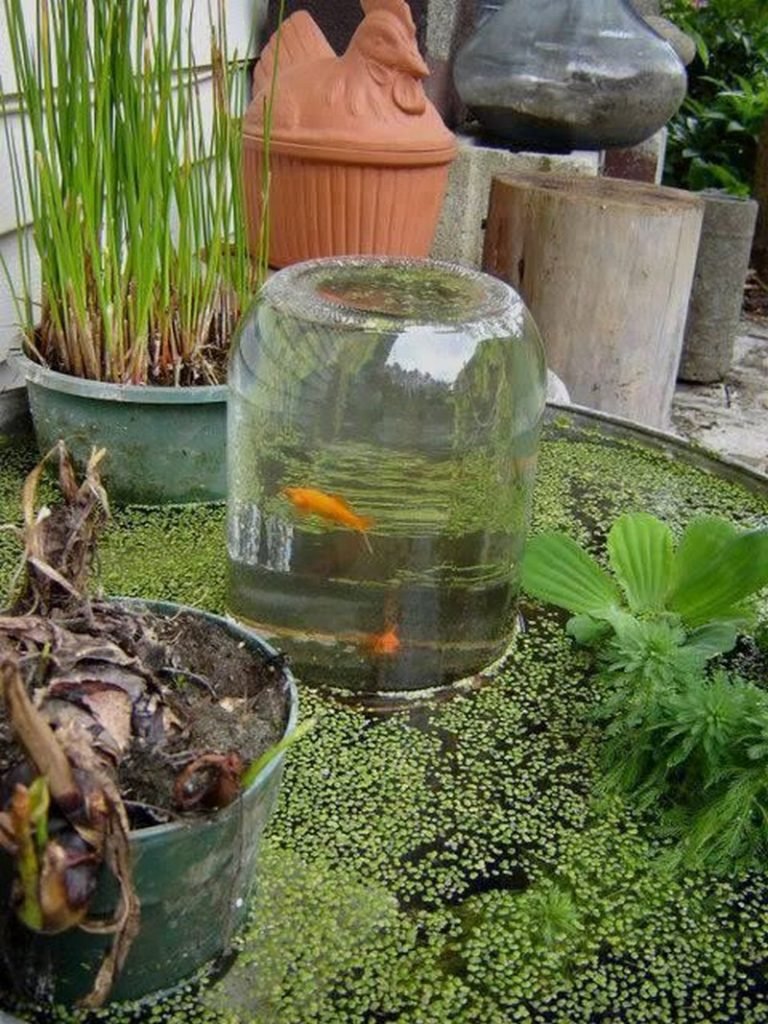
The 7-Hour Pond
One of the backyard pond ideas that hold within its tranquil waters a tale as old as time itself. Its name whispered in hushed tones among those who have been fortunate enough to stumble upon its secluded shores, carries with it an air of mystery and enchantment.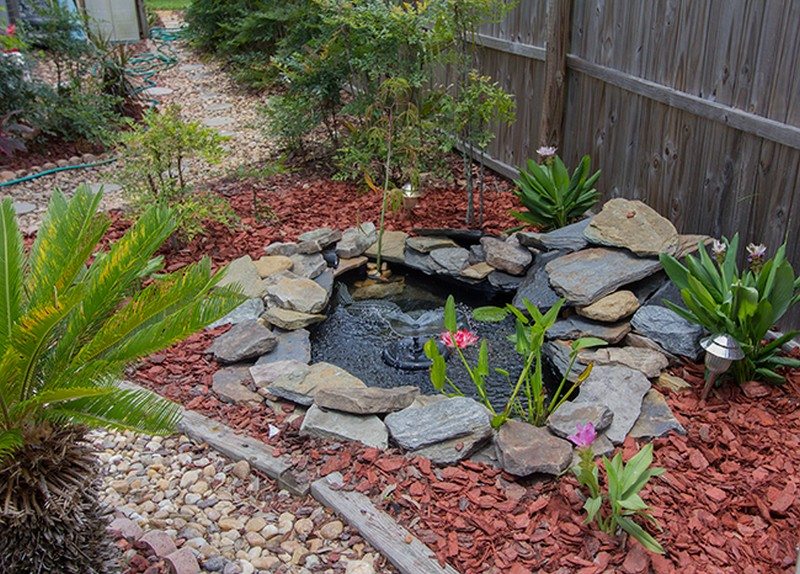
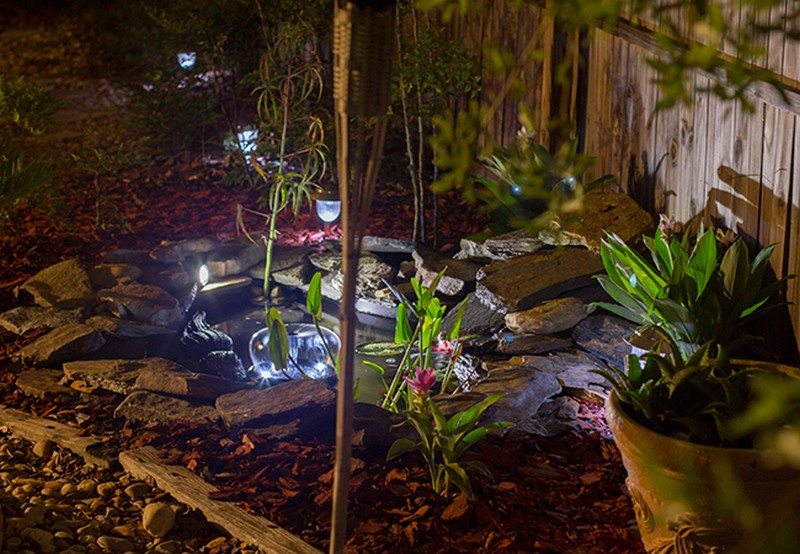
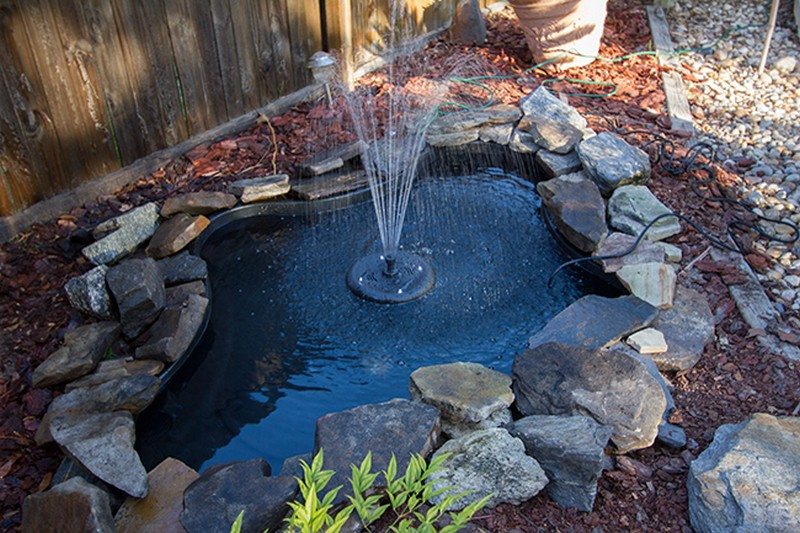
Stock Tank Pond
A Stock Tank Pond, also known as a stock tank, is a low-cost way to create a wetland habitat for water-loving plants and animals. The process of establishing a stock tank is relatively easy, but time-consuming and requires follow-up maintenance. Stock tank ponds are typically created using a rain barrel, a large container, and a stock tank liner.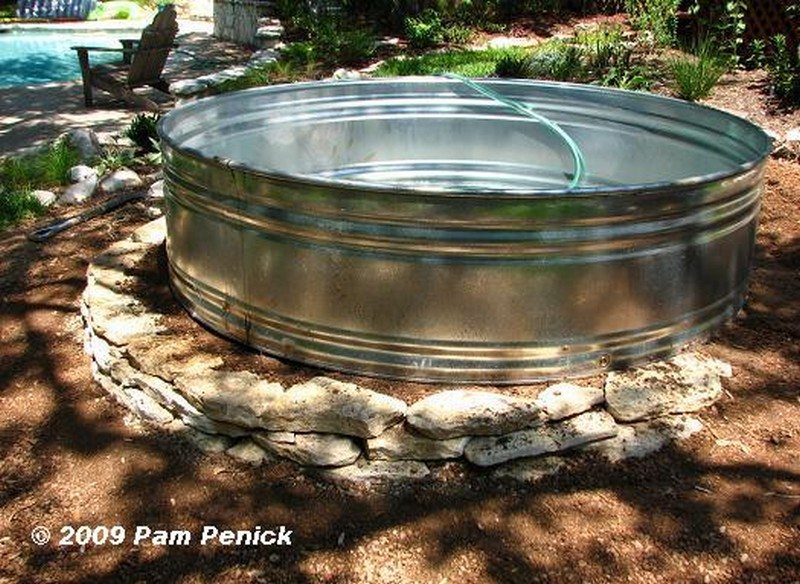
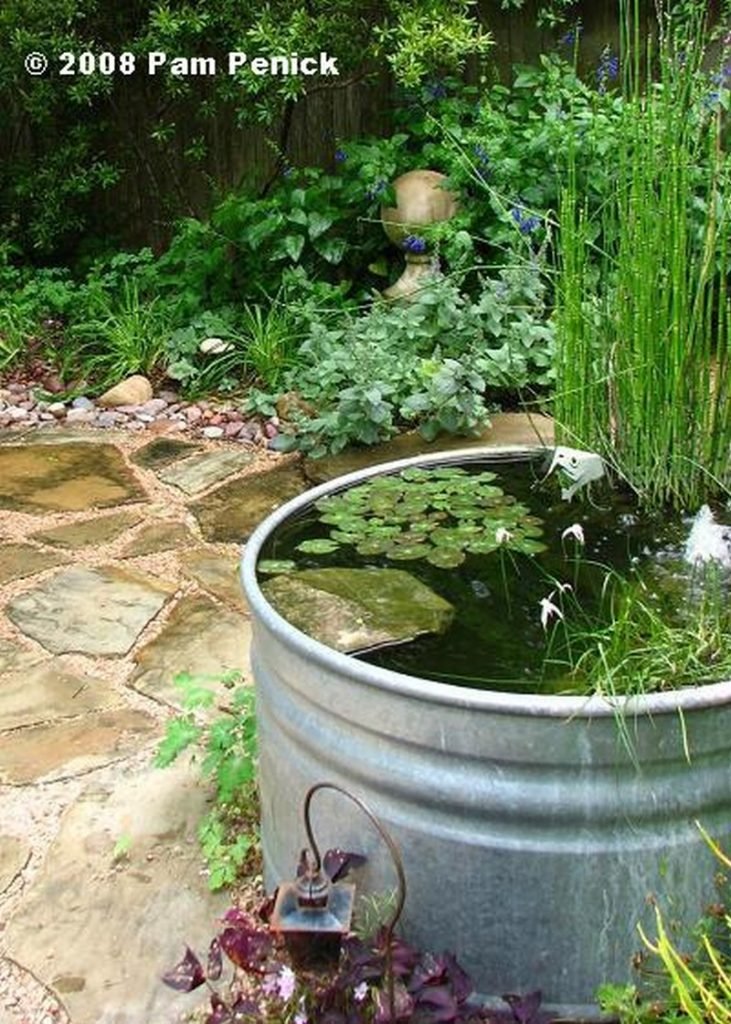
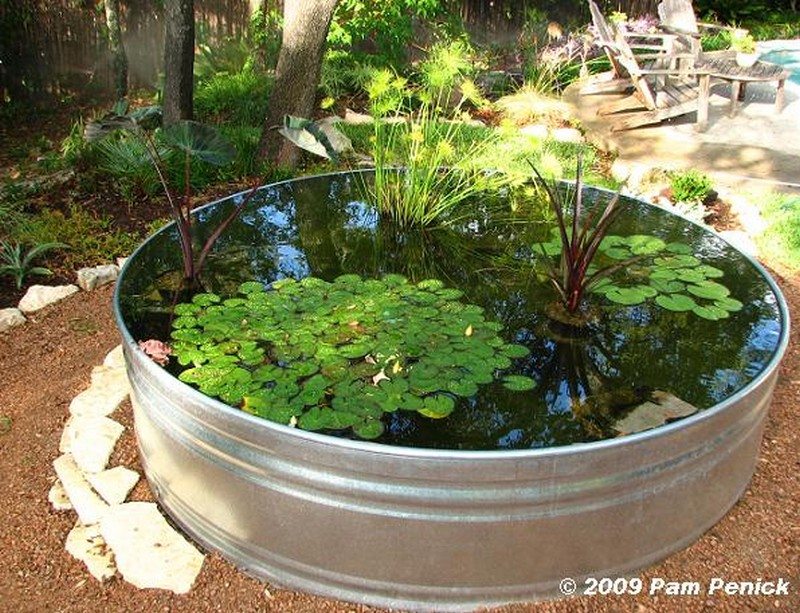
DIY Garden and Deck-Top Pond In One
It is a typical deck box divided into two sections, one part is a pond and the other is a mini garden. This is one of the backyard pond ideas that is basically hitting two birds with one stone.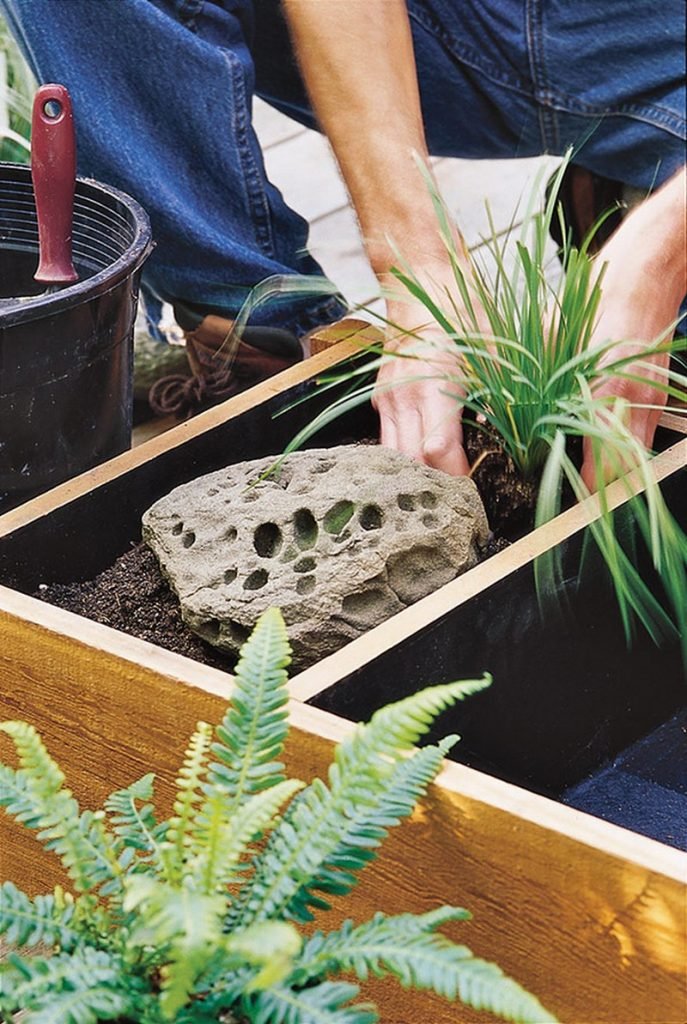

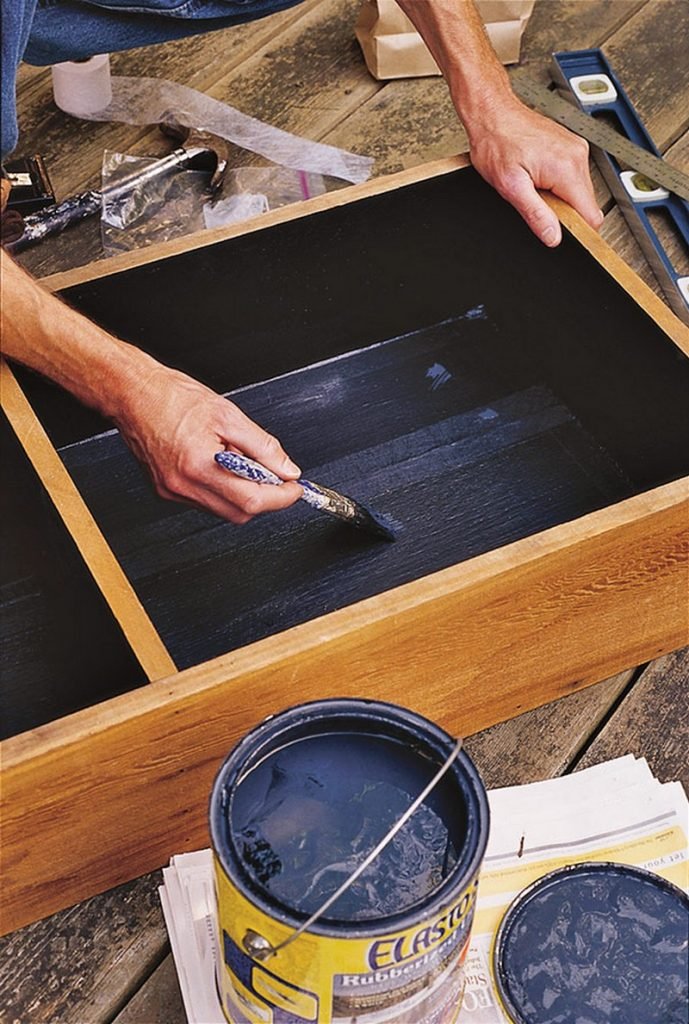
DIY Container Water Garden
Water gardens are containers that are filled with water, rocks, and plants. There are several advantages to this type of container. This type of container is usually manufactured with plastic, which is easily cleaned and durable.
The base of the container can be easily removed to allow for easy rinsing and drainage of the water. This type of water garden is easy to maintain and tends to look good regardless of the age of the container.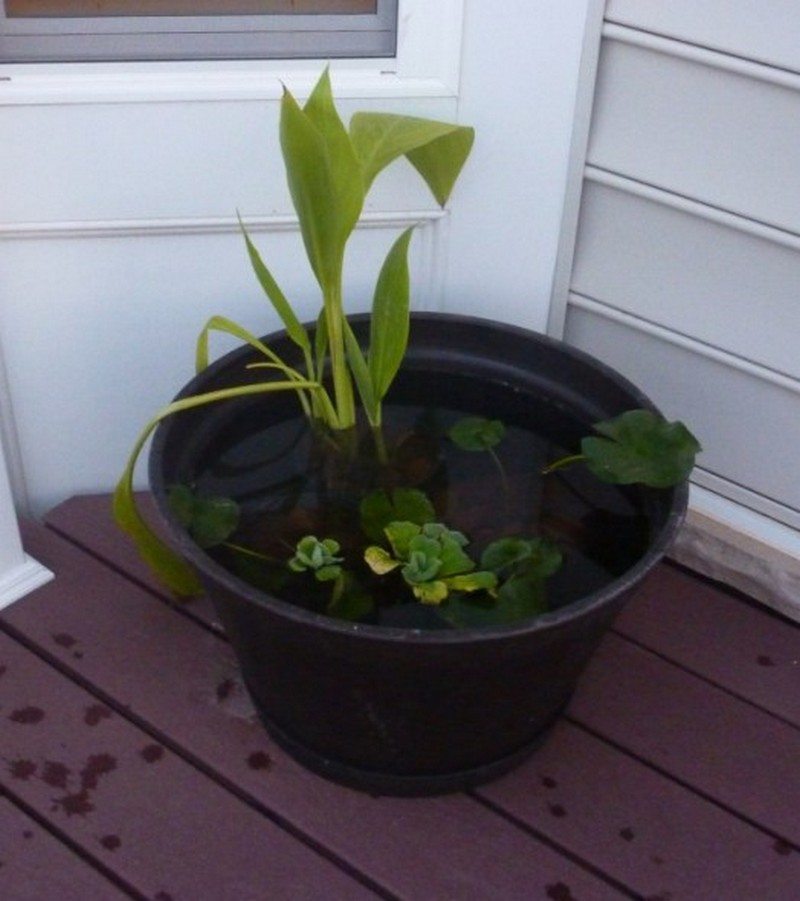
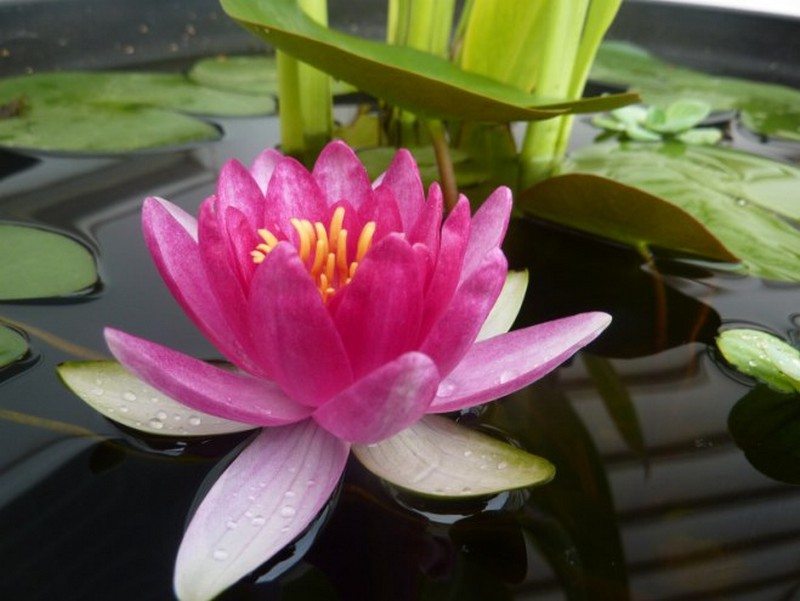
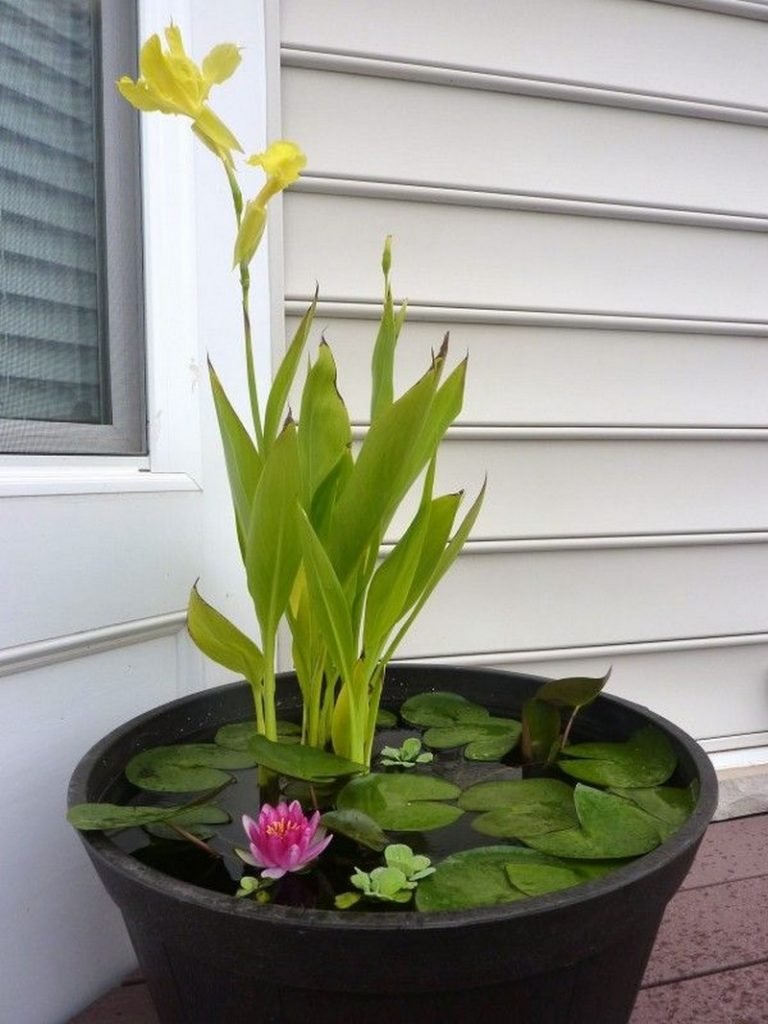
DIY Container Fish Pond
A DIY Container Fish Pond is the perfect solution for anyone who is short on space and wants to grow their own aquatic fish. A fish tank is just a plastic container that you can buy at the store.
Fish food can be bought at the local pet store, and you can incorporate a small pump to add water to the tank. You should be able to make your fish tank in a matter of days.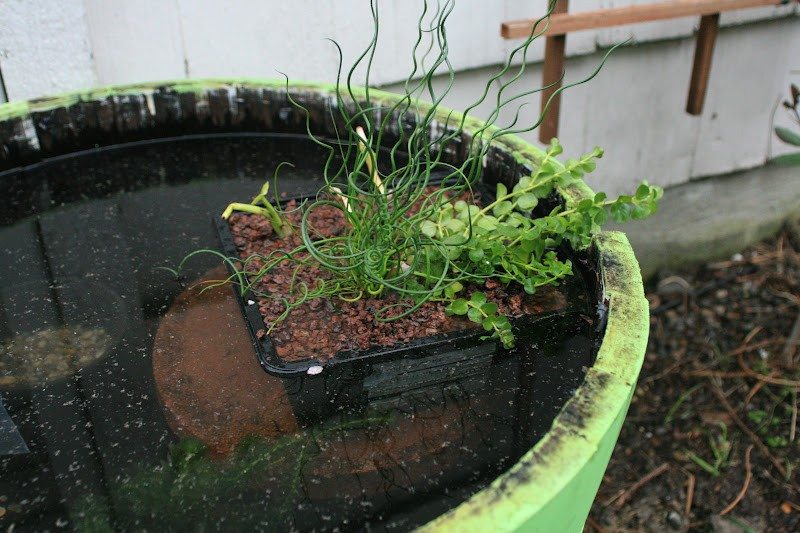
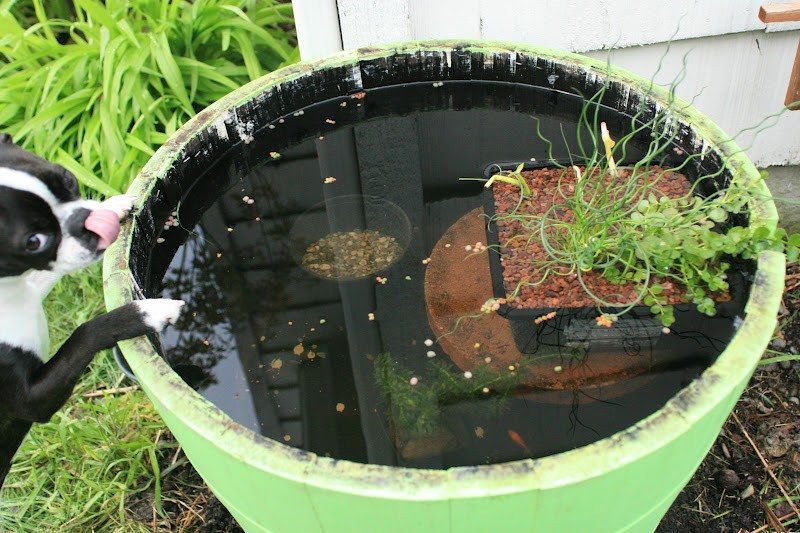
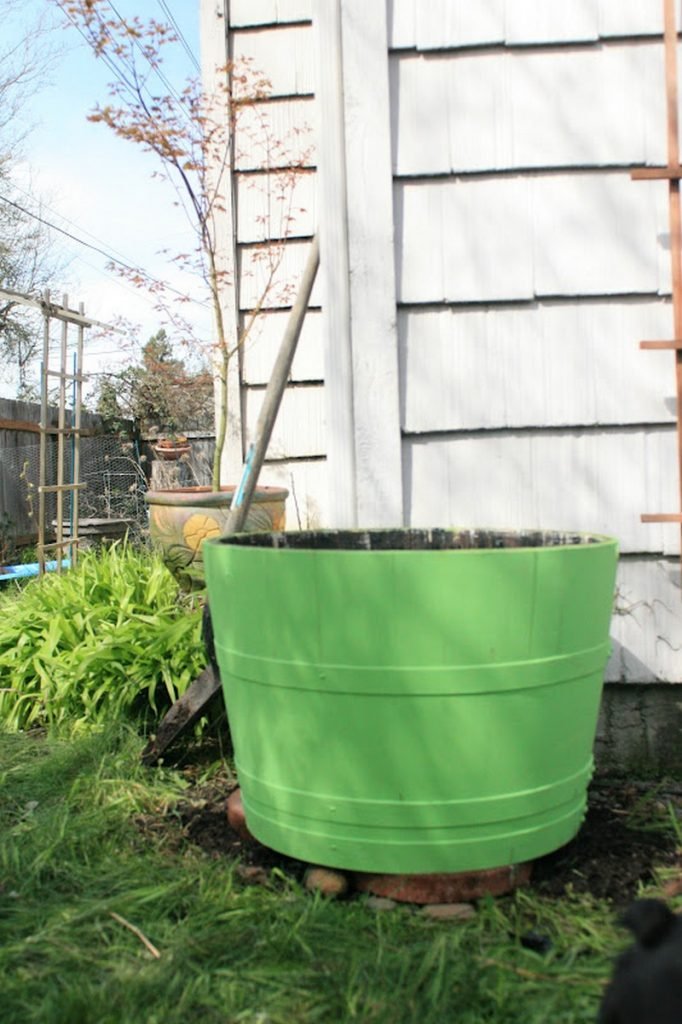
Fishie Hi-Rise
A Fishie Hi-Rise is a tank that incorporates a water-tight fish bowl as the base. Fish can be added to the bottom of the fish bowl without any trouble. It is an attractive and classic way to display fish and is a popular choice for indoor aquariums.
The fish bowl is supported by a vertical stand, which is elevated off the floor. It is a popular choice for small or interior aquariums.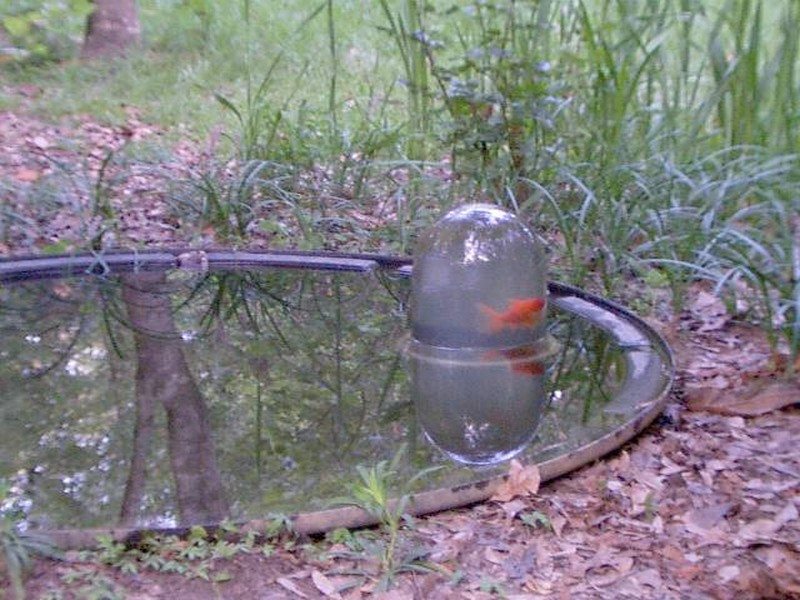
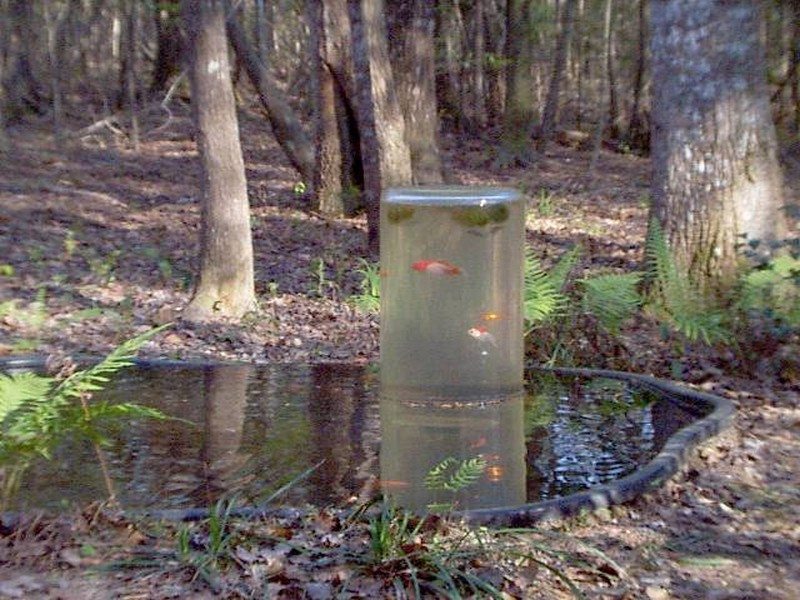
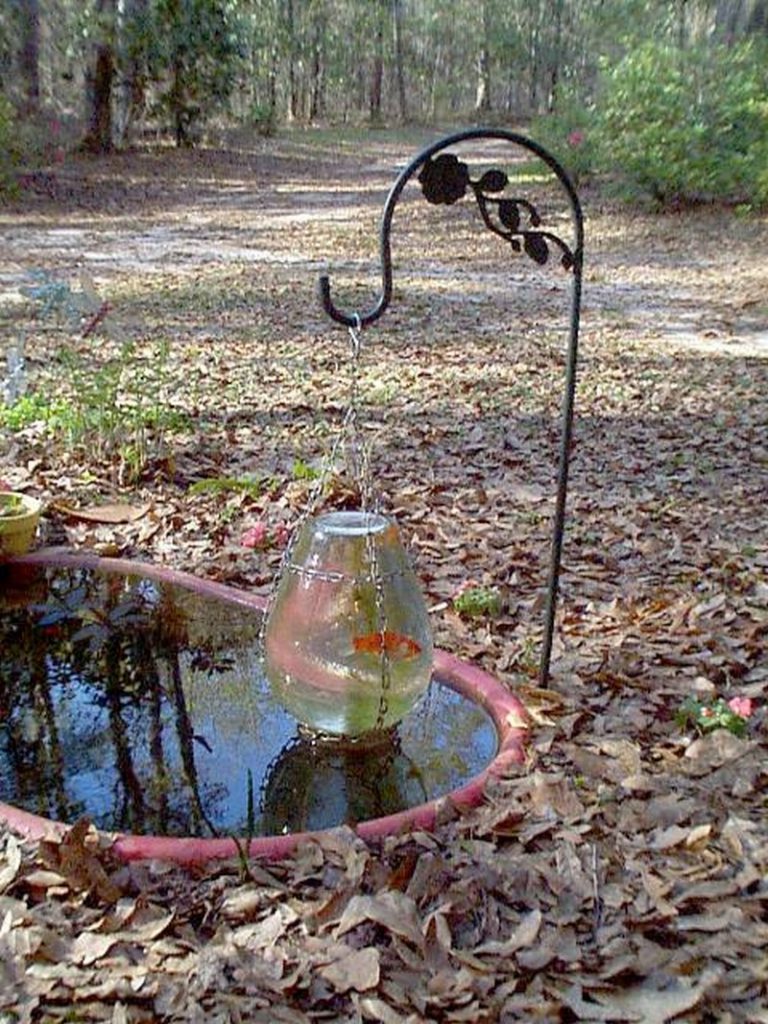
If you liked this project, you will also like viewing these easy DIY projects…
Safety Precautions
Ensuring safety around a fish pond is critical to prevent accidents and protect both human and aquatic life. Here are some key safety precautions to consider:
1. Barriers and Fencing: Install a barrier such as a fence or railing around the pond to prevent children, pets, or wildlife from falling in accidentally. Ensure that the barrier is sturdy and has a secure gate that can be locked when the area is not supervised.
When designing the barrier, ensure it is of adequate height and designed to effectively deter climbing attempts and prevent individuals from accessing the water unsupervised. Consider factors such as spacing between components to prevent smaller animals or pets from squeezing through gaps.
Integrating a secure gate into the barrier system enhances controlled access to the pond area. The gate should feature a reliable locking mechanism, such as a robust latch with a padlock or an automated locking system, to prevent unauthorized entry when the area is not under supervision. Regular maintenance of the gate and locking mechanism is essential to ensure their proper functionality and security.
Supervision is paramount whenever children and pets are in proximity to the pond. Accidents can occur swiftly and without warning, underscoring the importance of constant vigilance. Designate a responsible adult to actively monitor their activities and intervene promptly to prevent them from leaning or reaching too close to the water’s edge.
2. Supervision: Always supervise children and pets when they are near the pond. Never leave them unattended, as accidents can happen quickly. Keep an eye on them to prevent them from leaning or reaching too close to the water.
3. Secure Edges: Ensure that the edges of the pond are stable and safe to prevent trips, slips, or falls. Avoid using sharp or protruding materials around the perimeter of the pond.
4. Non-Toxic Plants and Materials: Incorporate non-toxic plants and materials in and around the pond to avoid harm to both humans and aquatic life. Avoid using chemicals or pesticides near the pond that could contaminate the water.
5. Electrical Safety: If your pond has electrical components such as pumps, filters, or lighting, ensure that they are installed and maintained by a qualified professional. Use ground fault circuit interrupters (GFCIs) to prevent electric shock hazards.
6. Safe Handling of Equipment: Educate yourself and others about the safe operation and maintenance of any equipment used in or around the pond. Follow manufacturer instructions and guidelines to prevent accidents.
7. Temperature Monitoring: Be mindful of water temperature, especially in extreme weather conditions, to prevent stress or harm to the fish and other aquatic life. Provide shade or shelter during hot weather and prevent the pond from freezing over in winter.
8. Emergency Preparedness: Have a plan in place for emergencies, such as having a rescue device like a shepherd’s crook or life ring nearby. Ensure that everyone in the household knows how to respond to an emergency.
9. Regular Maintenance: Keep the pond clean and well-maintained to prevent hazards such as algae growth, water stagnation, or debris accumulation. Perform routine inspections and address any issues promptly.
By following these safety precautions, you can build a safe and enjoyable environment around your fish pond for everyone to enjoy.
The Wrap Up
Incorporating an aquarium or fish pond into your backyard can elevate the aesthetics and tranquillity of your outdoor space. These eight small backyard pond ideas offer a spectrum of creative possibilities, from intimate aquariums to sprawling fish ponds, each with its unique charm and appeal.
By exploring these ideas, you can customize your backyard oasis to reflect your style and preferences, while providing a habitat for aquatic life to thrive. Whether you opt for a serene koi pond, a vibrant tropical aquarium, or a naturalistic ecosystem pond, the result will be a captivating focal point that enhances your outdoor living experience.
Remember to consider factors such as space, budget, and maintenance requirements when planning your aquarium or fish pond project. With careful design and attention to detail, you can create a harmonious balance between aesthetics and functionality, transforming your backyard into a peaceful retreat for relaxation and enjoyment.
So, dive into these ideas, unleash your creativity, and embark on the journey of transforming your backyard into an aquatic paradise that you, your family, and your guests will cherish for years to come.
FAQ: Outdoor Fish Pond
- What are the benefits of having a fish pond in my backyard?
- Having a fish pond in your backyard can enhance the beauty and tranquillity of your outdoor space. It provides a natural habitat for fish, promotes biodiversity, and offers a peaceful environment for relaxation and contemplation.
- What types of fish are suitable for a backyard pond?
- Several fish species, including koi, goldfish, and various types of native pond fish, are well-suited for backyard ponds. It’s important to choose fish that are compatible with your climate and pond size and can coexist peacefully. Avoid combining aggressive or predatory species with smaller, more docile fish to prevent conflicts and ensure harmonious interactions.
- How do you maintain a fish pond?
- Regular maintenance is essential for the health and cleanliness of your fish pond. Tasks may include monitoring water quality, cleaning filters, performing water changes, and ensuring proper nutrition for fish and plants. Remove debris like fallen leaves and decaying plant material to prevent water contamination. A skimmer net is handy for regular surface cleaning.
- Can you incorporate plants into your fish pond?
- Yes, incorporating aquatic plants can enhance the aesthetic appeal of your fish pond while providing habitat and food for fish and other aquatic organisms. Choose plants that are suitable for your climate and water conditions.
- Do you need a filtration system for your fish pond?
- Yes, a filtration system is critical for maintaining water quality and keeping your fish healthy. There are several types of filtration systems available, including biological, mechanical, and chemical filters. Choose the appropriate system based on the size of your pond and the number of fish you plan to keep.
- How do you prevent predators from harming your fish in a backyard pond?
- Installing a sturdy barrier, such as a net or fence, can help deter predators like birds, raccoons, or cats from accessing your fish pond. Additionally, providing hiding spots and underwater shelters for fish can offer protection from potential threats.
- What should you do if your fish becomes sick?
- If you notice signs of illness or distress in your fish, it’s important to take action promptly. Quarantine any affected fish to prevent the spread of disease, and consult with a veterinarian or experienced fishkeeper for advice on treatment options.
- Can you add other aquatic animals to your fish pond?
- Depending on the size and design of your pond, you may be able to incorporate other aquatic animals such as frogs, turtles, or shrimp. However, it’s essential to research the compatibility of these species with your fish and ensure they have adequate space and resources to thrive.
- How can I utilize rocks in my garden to create a low budget waterfall pond?
- Use large rocks to form a natural cascade. Overlapping flat stones can enhance the waterfall effect. Position medium and small rocks to anchor the waterfall structure. Adjust as needed to ensure water flows smoothly.
- What is a zen container pond?
- A zen container pond is a miniature, serene water garden inspired by traditional Japanese aesthetics. It’s a budget-friendly way to bring tranquility and nature into small spaces, perfect for patios or balconies.
- What is a river rock garden pond?
- A river rock garden pond is a scenic addition to any outdoor space, offering a natural water feature that brings tranquility and charm to your garden. It’s essentially a small pond embedded with smooth stones or slates that mimic the natural aesthetics of a river. This type of pond not only enhances the visual appeal of your yard but also supports local wildlife by providing a habitat for various species.
- What factors should I consider when choosing the location for my pond?
- The first aspect to consider is sunlight. Opt for a location where your pond can bask in morning sunlight and enjoy afternoon shade. While trees offer beneficial shade in the afternoon, placing your pond directly under them can lead to debris problems. Falling leaves, seeds, and needles may quickly clog your pond, ramping up maintenance. Evaluate existing trees and consider potential clutter from their branches.



